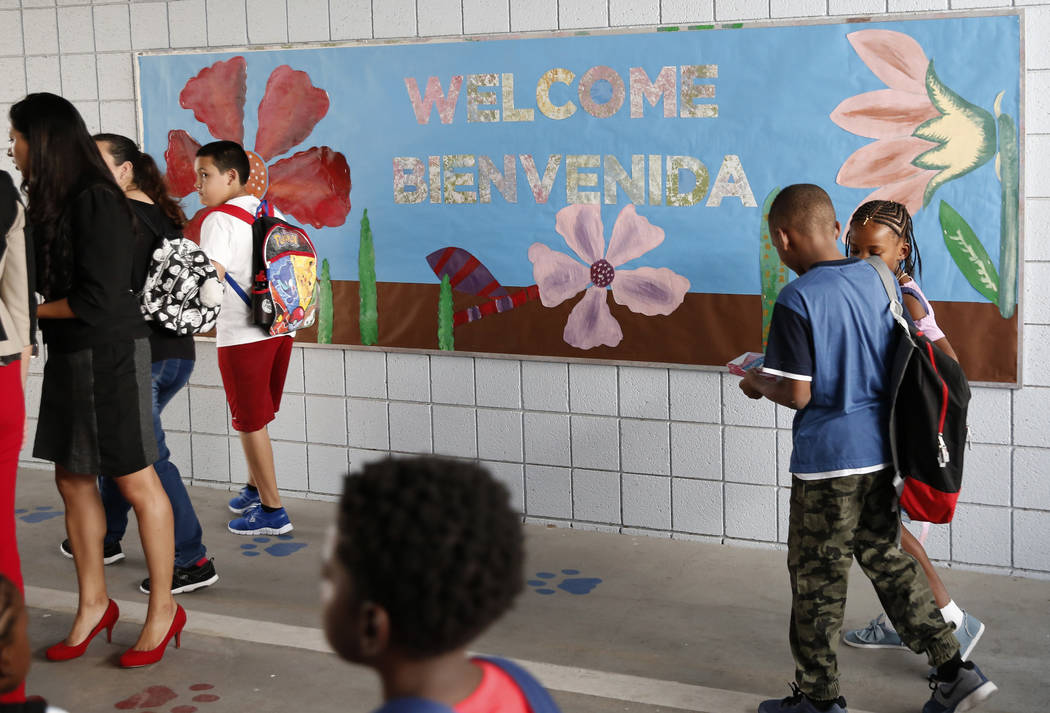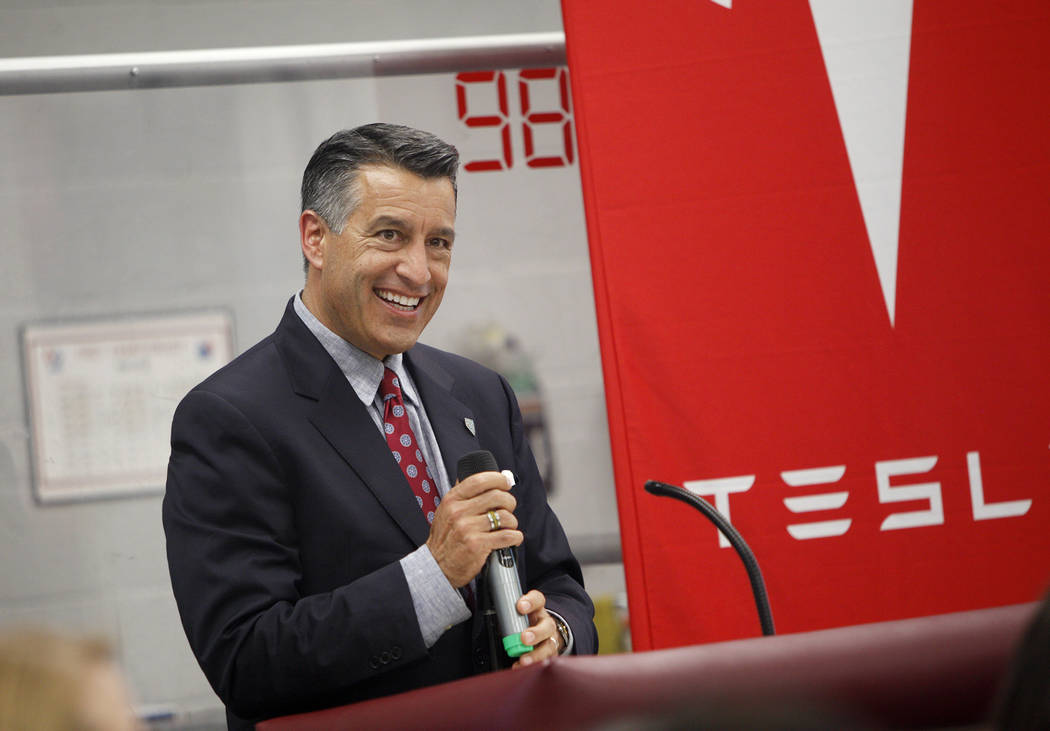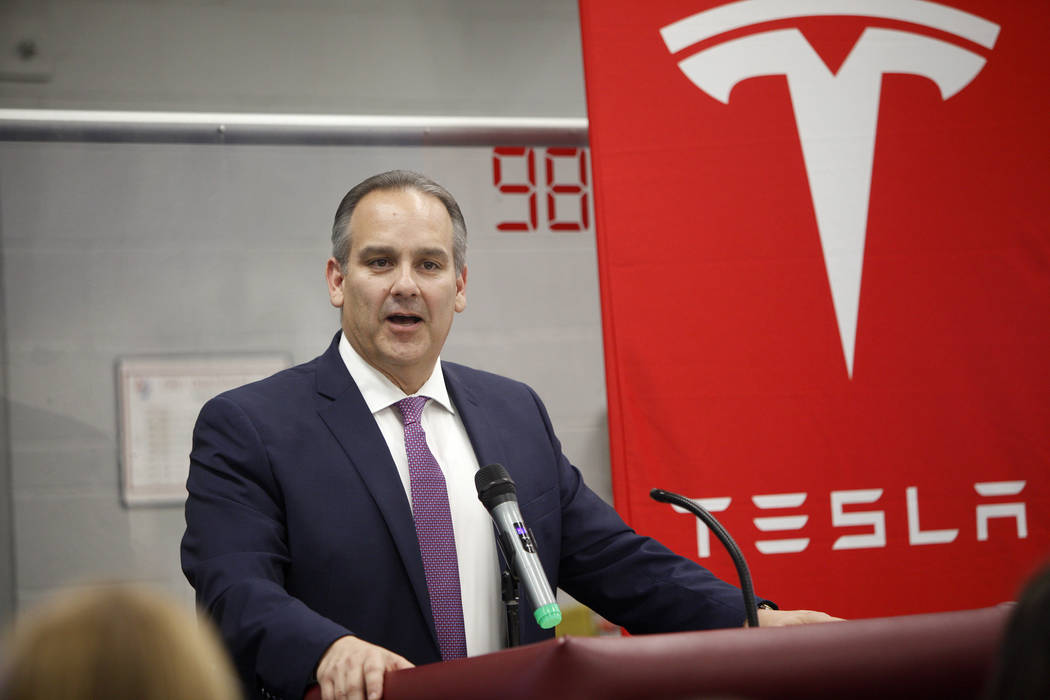New plan for education: Repeat the old plan
Nevada’s education establishment has a new plan to fix schools: Repeat the old plan.
Nevada politicians first implemented the buzzwords you hear now — more funding, smaller class sizes, increased teacher pay — decades ago.
“Presently, we find education in the process of a reorganization program and at the same time experiencing a rapid growth in enrollment.” That comment could have come from new Clark County School District Superintendent Jesus Jara. It didn’t. Then-Gov. Grant Sawyer delivered that line in his 1959 State of the State address, along with “recommend(ing) in the executive budget substantial increases in school aid.”
In 1977, then-Gov. Mike O’Callaghan called for a 20 percent increase in education spending. He also included in his budget specific money for special education — an early version of the “weighted funding” that’s the current craze.
The Legislature also enacted competency tests in 1977. In 1979, then-Gov. Robert List proposed that “funding be provided” to help schools with those tests. He also wanted a “record amount” for education.
“It is time to drastically improve counseling services at the elementary school level,” said List. Early counseling “would be a positive step in improving education, as well as reducing crime in years to come.”
All of that spending didn’t improve Nevada’s education system. In 1989, then-Gov. Bob Miller said that “up to one-third of our children will drop out of school and never graduate.”
His solution? Smaller class sizes and higher teacher salaries.
“We must begin a concerted effort to reduce class sizes to an acceptable level, especially for grades K through 3,” said Miller. He also recommended an “across-the-board salary increase for teachers” of 5 percent.
At Miller’s urging, the Legislature funded the class-size reduction program that session. Since then, Nevada has spent more than $3 billion on it.
“When this legislative session adjourns, I sincerely hope we will be able to go back to our children and say, ‘We have made a difference, we have helped you prepare for the future, we have improved your quality of life,’ ” said Miller.
Despite success in implementing his education programs, the education failures Miller worried about remain. In 2018, just 29 percent of the Clark County School District’s fourth-graders are proficient in reading.
Those failures were still evident in 2003 when Nevada’s next governor, Kenny Guinn, started his second term.
“Education isn’t just on my agenda, it is my agenda,” said Guinn. “Education is crucial to the survival and success of every Nevada business.”
That year, he forced through what was, at the time, the largest tax increase in Nevada history specifically for education. He also proposed hiring bonuses for new teachers and $40 million so teachers wouldn’t have to purchase supplies.
The cycle repeated itself in 2015, when Gov. Brian Sandoval pushed through the largest tax increase in Nevada history — specifically to boost education funding. Sandoval promised his plan would “modernize and transform Nevada for its next 50 years of success.”
Sandoval continued, “What we must all agree on is that another generation of young Nevadans cannot move through our schools without more resources, choice and reform.”
Check the calendar. It’s just three years later, and Sandoval’s 50-year plan didn’t survive his final term without the education establishment coming back for more. Last week, consultants submitted a report to the Legislative Committee on Education that — you guessed it — called for dramatic increases in per-pupil spending. It included not one word to explain why six decades of spending increases have failed to bring about the desired results.
This is why schools need structural reforms — such as changes to collective bargaining laws and competition through school choice. But the folks in Nevada’s education establishment aren’t interested in learning from past failures. They’re insisting Nevada repeat them.
Contact Victor Joecks at vjoecks@reviewjournal.com or 702-383-4698. Follow @victorjoecks on Twitter.





































